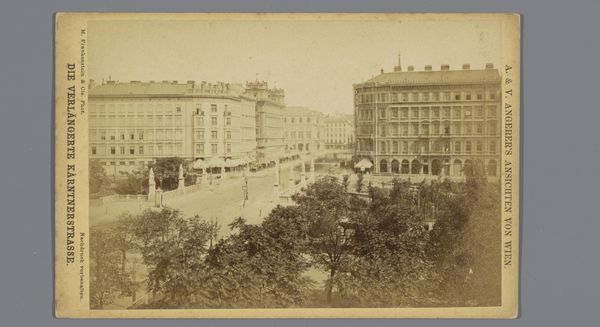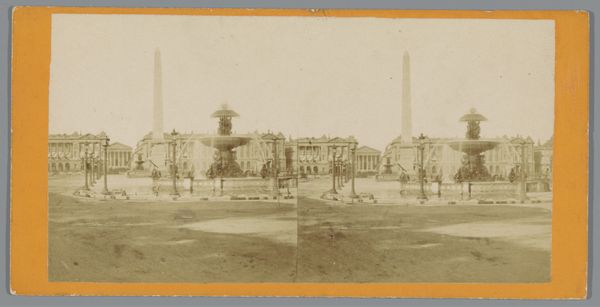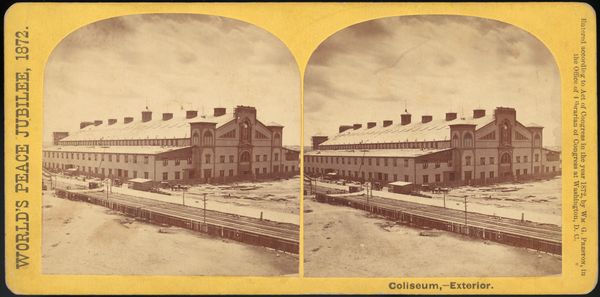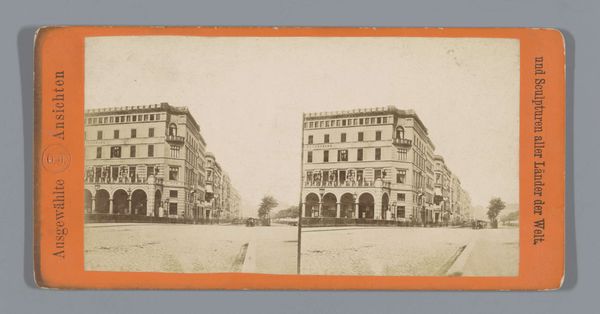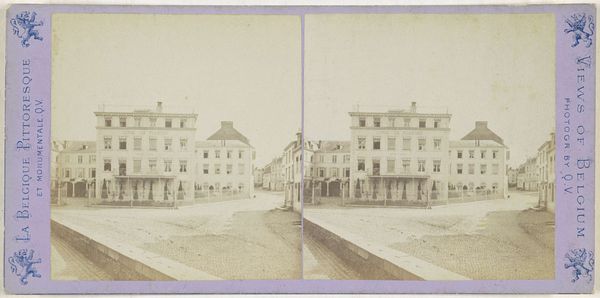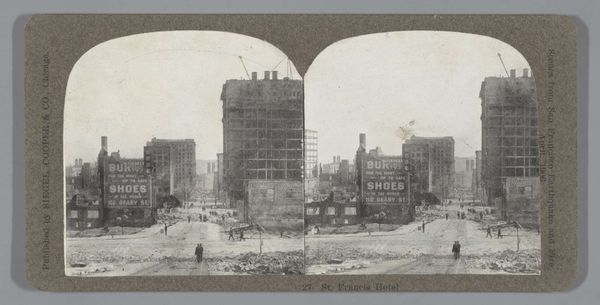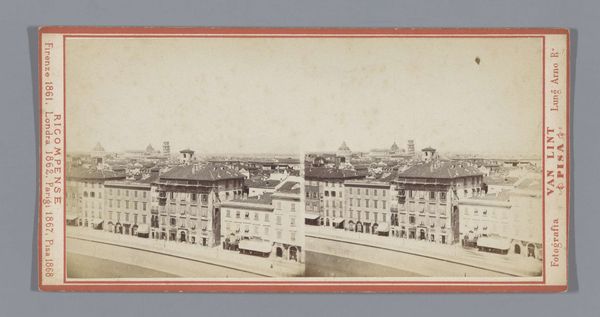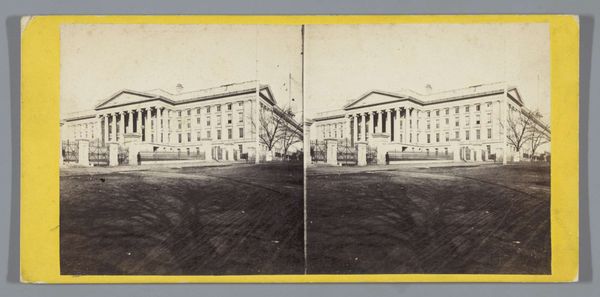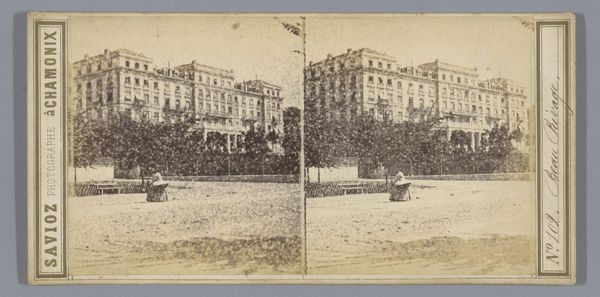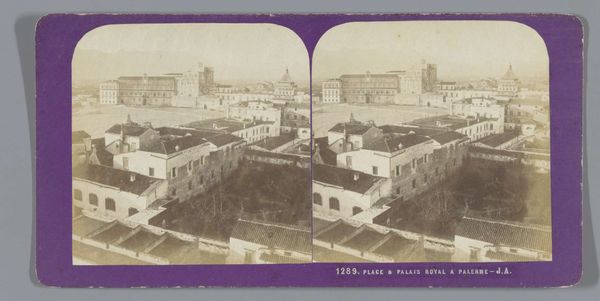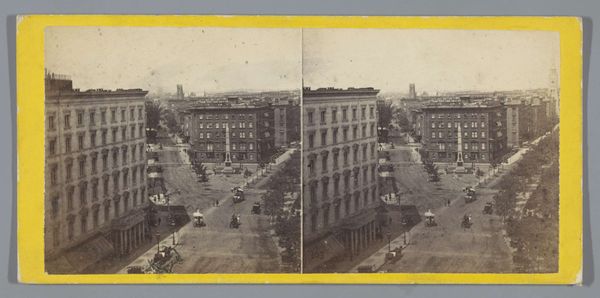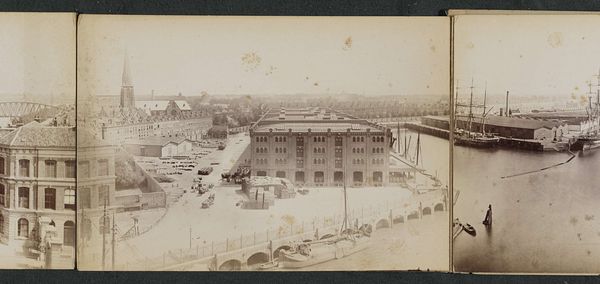
photography
#
photography
#
cityscape
#
watercolor
Dimensions: 3 x 5 5/16 in. (7.62 x 13.49 cm) (image)3 3/8 x 6 15/16 in. (8.57 x 17.62 cm) (mount)
Copyright: Public Domain
Curator: Jeremiah Gurney's "Untitled" cityscape, dating from 1869 to 1874, offers a compelling glimpse into the urban environment of New York. Editor: My first thought? A rather ghostly stillness. The light is beautiful, almost hazy, yet there’s a certain starkness to the architecture that strikes me. It’s imposing but somehow vacant, do you know what I mean? Curator: Yes, and I think the materiality and process play a large part in that impression. This isn’t just a snapshot. It’s a stereo photograph, a dual image meant to create an illusion of depth. Consider the labor involved – the specific chemistry and the bulky equipment. This technology was reshaping how the city was visualized and understood. Editor: And how that understanding was disseminated. Gurney & Son were prominent publishers. Looking at it, I’m curious about who would buy something like this back then? What social circles enjoyed consuming such a portrayal of New York, and how might it have shaped their perception of the city’s relentless growth? Curator: Precisely. It reflects a period of significant social and economic transformation in New York, with the rise of commercial photography providing new forms of documentation and also entertainment, consider it in the rise of tourism and the creation of the “postcard view” aesthetic. It's intriguing to think about this intersection of technology, industry, and public consumption. The details are fantastic. Editor: I am curious: how would period commentators have talked about or conceived of a modern metropolis? Do such early depictions of urban modernity reveal latent attitudes, prejudices, or points of view relating to development, immigration or perhaps class relations? It would be really fascinating to learn the specific history. Curator: Absolutely. By focusing on the methods and materials, and questioning assumptions of the day, we see a city built of social change. Editor: Indeed. And reflecting upon the legacy of photographic representations, like this one, gives a vital means to challenge the narratives that museums and the marketplace convey to their audiences. Curator: Exactly. Seeing this “Untitled” piece not just as a pretty photograph, but as evidence of a moment where materiality and process meet socio-political forces helps us reassess our preconceptions of a supposed familiar subject. Editor: Absolutely, and thinking through these factors really shifts the way that a contemporary audience could relate to it, too. Thanks!
Comments
No comments
Be the first to comment and join the conversation on the ultimate creative platform.
